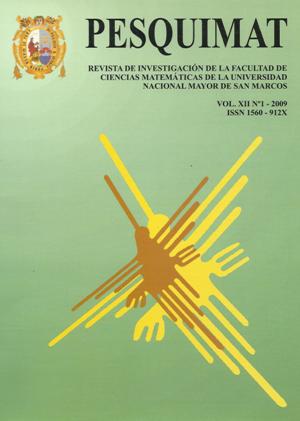FORECAST AND ANALYSIS OF THE NINO PHENOMENON OVER THE NORTH OF PERU
DOI:
https://doi.org/10.15381/pes.v12i1.9493Keywords:
Markov's chains, transition matrix, Sea surface temperatureAbstract
El Niño is one of the phenomena ocean atmospheric that with major frequency impacts over the north region of Peru, which is characterized for intensity rains in the north zone of Peru, causing enormous economic losses and damages in the agriculture, road infrastructure, fisheries, in the education sector, health sector between others. Based on the historical monthly information of the sea surface temperature of the zones Tumbes, Paita and Chicama and using the tools stochastic of prediction as like The Markov's chains, in this research one tries to predict the possible appearance of these events front the Peruvian sea in agreement to different levels of intensity. Using the series of monthly information from beginning until the year 2007 and on the basis of a matrix of transition of Markov's chain, there becomes an attempt of forecast of the appearance of an event El Niño for 2009 of agreement to scales of intensity for the zones of Tumbes, Paita and Chicama in a transitional probabilities matrix.
Downloads
Published
Issue
Section
License
Copyright (c) 2009 Inés Gambini López, Esther Berger Vidal, José Carlos Ore Lujan, Luis Pizarro Pereyra

This work is licensed under a Creative Commons Attribution-NonCommercial-ShareAlike 4.0 International License.
THE AUTHORS RETAIN THEIR RIGHTS:
a) The authors retain their trademark and patent rights, and also on any process or procedure described in the article.
b) The authors retain the right to share, copy, distribute, execute and publicly communicate the article published in Pesquimat magazine (for example, place it in an institutional repository or publish it in a book), with recognition of its initial publication in the Pesquimat magazine.
c) The authors retain the right to make a later publication of their work, to use the article or any part of it (for example: a compilation of their works, notes for conferences, thesis, or for a book), provided that they indicate the source of publication (authors of the work, magazine, volume, number and date).






